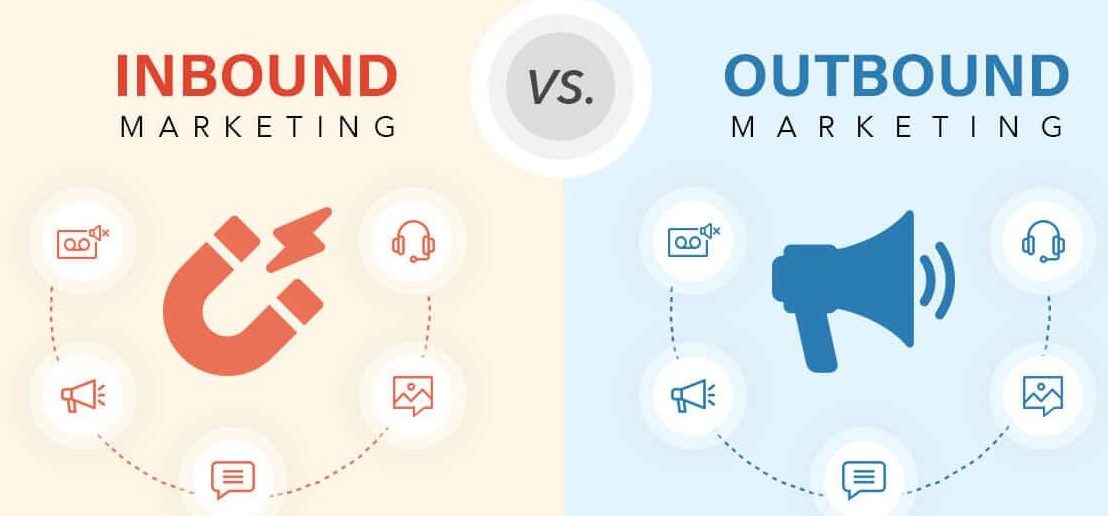
In the marketing world, two primary approaches stand out: inbound and outbound marketing. While both methods aim to attract and engage customers, they differ significantly in their strategies and execution. Understanding the pros and cons of each approach is crucial for businesses to make informed decisions about their marketing strategies. This blog post will delve into the strengths and weaknesses of inbound vs outbound marketing, highlighting their distinctive features and benefits.
Inbound Marketing:
Inbound marketing focuses on attracting and engaging customers through valuable content and experiences. The approach aims to pull potential customers towards a brand by addressing their needs and interests. Here are the pros and cons of inbound marketing:
Pros of Inbound Marketing |
Cons of Inbound Marketing |
|---|---|
| Targeted Audience: Businesses can attract high-quality leads by targeting a specific audience interested in their products or services. | Time-Intensive: Inbound marketing requires consistent effort and time to create valuable content, optimize it for search engines, and engage with the audience. |
| Cost-Effective: Creating and sharing content online is often less expensive than traditional advertising methods like TV or print ads. | Dependence on SEO: Changes in search engine algorithms or fierce competition can affect a brand’s visibility and organic traffic. |
| Establishing Thought Leadership: By providing valuable and informative content, businesses can establish themselves as thought leaders in their industry. | Lack of Control: It’s challenging to control how and when potential customers discover the brand’s content, which may slow down the lead generation process. |
| Long-Term Benefits: Content created and optimized for search engines can continue to attract organic traffic and generate leads even after months or years. |
Outbound Marketing:
Outbound marketing, or traditional or interruption marketing, involves reaching out to potential customers through various promotional methods. The approach aims to push a brand’s message to a broad audience.
Let’s explore the pros and cons of outbound marketing:
Pros of Outbound Marketing |
Cons of Outbound Marketing |
|---|---|
| Quick Results: Outbound marketing strategies can deliver immediate results in generating awareness and leads. | High Costs: Outbound marketing can be costly, especially for small businesses with limited budgets. |
| Direct Message Delivery: Businesses have more control over the message they want to convey and can ensure it reaches a broad audience. | Intrusiveness: Outbound marketing methods are often seen as intrusive or interruptive by consumers, leading to a negative brand image. |
| Tangible Presence: Outbound marketing methods provide a tangible presence for a brand, such as billboards or TV ads. | Limited Targeting: Outbound strategies reach a broader audience, including individuals who may not be interested in the product or service. |
| Decreasing Effectiveness: Over time, outbound marketing has become less effective due to changing consumer behavior and the rise of ad-blocking technology. |
Inbound vs. Outbound Marketing – Which is Right for you?
- Target Audience Analysis: Understand your target audience’s preferences, behaviors, and consumption habits. This knowledge will help determine which marketing methods will most effectively reach and engage them.
- Content Strategy: Develop a robust strategy combining valuable, educational content (inbound) with targeted promotional messages (outbound). You can establish trust and credibility by providing informative content while promoting your products or services.
- Multi-Channel Approach: Utilize multiple marketing channels to create a cohesive and integrated marketing campaign. Combining inbound tactics like search engine optimization and content marketing with outbound methods such as social media advertising or influencer partnerships can maximize your brand’s reach and impact. You can also consult with an SEO agency Bali.
- Test and Measure: Continuously monitor and analyze the performance of your marketing efforts. Use analytics and metrics to identify what strategies are working and what adjustments may be needed. This data-driven approach will help you refine your marketing mix over time.
Conclusion: Inbound vs. Outbound
Inbound and outbound marketing each has its merits and challenges. Inbound marketing excels at attracting a targeted audience through valuable content and establishing thought leadership, while outbound marketing can deliver quick results and allow for more direct message delivery. Finding the right balance between these two approaches is essential for an effective marketing strategy. By understanding the pros and cons of both methods and aligning them with your business goals and target audience, you can create a comprehensive marketing plan that maximizes results and drives growth.





